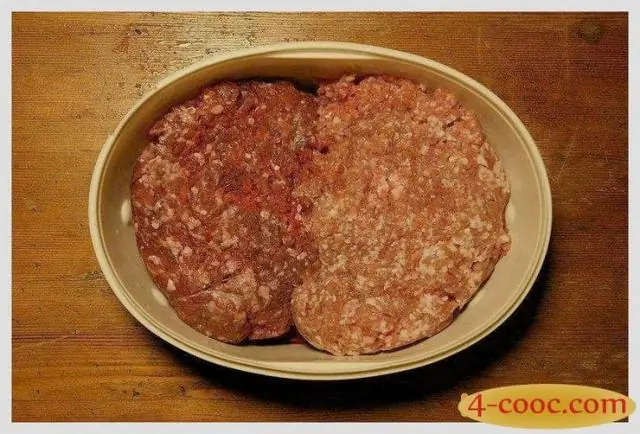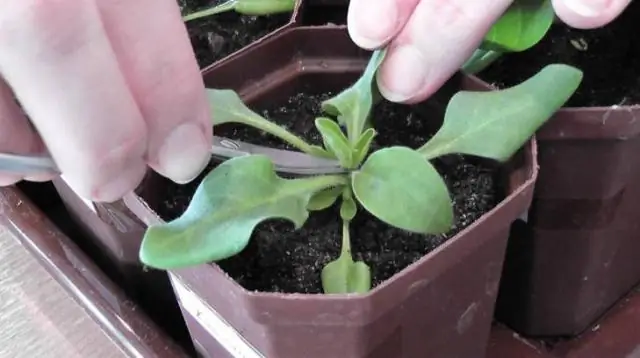
Table of contents:
- Author Bailey Albertson [email protected].
- Public 2024-01-17 22:26.
- Last modified 2025-06-01 07:32.
Dutch Picasso, or Russian Limonka: a productive potato variety

As you know, potatoes are the second bread. Therefore, gardeners always approach the choice of a variety with due responsibility. Their requirements for the characteristics of the root crop are high. One of the favorite late-ripening varieties that invariably receives flattering descriptions is Limonka. This is how the Dutch variety Picasso was nicknamed "Russified" for many years of cultivation on Russian lands.
Content
- 1 Variety history
-
2 Description of Lemon potatoes and photo of a tuber in a section
- 2.1 Productivity and ripening time
- 2.2 Table: advantages and disadvantages of the variety
- 2.3 Video: description of the potato variety Limonka
-
3 Planting and caring for potatoes
- 3.1 Site selection, soil preparation and planting material
- 3.2 Table: fertilizing the soil before planting
- 3.3 Video: how to get a high yield of potatoes
- 3.4 Table: Basic care of Limonka potatoes during the period of growth and development
-
4 Potential diseases and pests
-
4.1 Table: Potato pests and control
4.1.1 Photo Gallery: Potato Pests
-
4.2 Table: diseases characteristic of the Limonka variety
1 Photo gallery: possible diseases of the potato plantation
-
- 5 Harvesting and storage
- 6 Reviews of vegetable growers about the potato variety Limonka
Variety history
The scientific name of the variety is Picasso, it is also official. The name was given to him by the breeders of Holland. It is no coincidence that the potatoes intended for the manufacture of chips received the artist's name. Red spots spread on the light yellow skin of the tuber, like on canvas. In Russia, this variety was nicknamed Limonka. In 1995, it was added to the State Register. Perfectly took root in the Central and Central Black Earth regions. It is widely distributed in the south of Russia.

Picasso potatoes have an unusual appearance
Description of potatoes Limonka and photo of a tuber in a section
Lemon is a tall, sprawling bushes with large dark green leaves; rather tough villi are present on the stems and on the underside of the leaves. This variety blooms with small white flowers that do not stand out much from dense greenery. The tubers are pear-shaped, they are heavy, elongated, weighing 130 grams. The skin is dense, light with red spots and a few eyes. On the cut, Lemon has yellow flesh. The starch content does not exceed 11%. When boiled, the tuber fully retains its shape and taste, which are rated at 5 points on a five-point scale. But at the same time, delicious mashed potatoes are obtained from such potatoes.

Tubers are even, have a small number of eyes
Productivity and ripening time
Lemon belongs to late-ripening potato varieties. From emergence to ripening of tubers, an average of 130 days pass. Potatoes are dug up in the third decade of September. Therefore, Limonka is especially loved in the south of our Motherland. Picasso gives high yields. From one bush you can get from 15 to 20 tubers, from one square meter about 4.5 kilograms of potatoes and from one hectare at least 20 tons of this valuable vegetable.

Lemon blooms profusely
Table: advantages and disadvantages of the variety
| pros | Minuses |
| Strong taste | Late maturing |
| Not boiled | Easily affected by late blight |
| Drought tolerant | Too spreading bushes |
| Crumbly | |
| Resistant to most dangerous diseases and pests | |
| Insensitive to temperature changes | |
| Excellent shelf life | |
| Easily adapts to a new growing area | |
| It perfectly tolerates even long-term transportation |
Video: description of the potato variety Limonka
Planting and caring for potatoes
It should be noted that Limonka potatoes are absolutely not picky about soils and easily master new horizons. Despite the fact that Picasso is widespread in the Central and Central Black Earth regions, it can be grown in other regions.
Site selection, soil preparation and planting material
The variety thrives on both heavy and light soils, with an excellent yield.
It is better to prepare the soil for planting potatoes in the fall. To do this, you need to dig up the area on the bayonet of a shovel, thoroughly clearing the ground from weed roots. If the soil is acidic (horsetail, horse sorrel, buttercup, pickulnik grow on it), in the fall you need to add dolomite flour or lime to it at the rate of one glass per 1 m 2. Picasso is very picky about fertilizers. The more competent their introduction, the higher the yields. Therefore, in the spring it is very important to enrich the soil with useful mineral and organic substances correctly and in the right amount.
Table: fertilizing the soil before planting
| Soil type | Fertilizer |
| Clay (loamy) | One bucket of humus per 1 m 2 |
| Sandy (sandy loam) | One bucket of humus and clay soil per 1 m 2 |
| Peat | One bucket of clay soil, river sand and humus (compost) per 1 m 2 |
Mineral fertilizers are applied for digging, regardless of the composition of the soil: 1 glass of ash and two tablespoons of nitrophoska per 1 m 2.
The choice of seed must be taken very seriously. After all, the success of the future harvest depends on this. It is recommended to carefully examine the tubers. They should be disease-free, clean, undamaged, about the size of a hen's egg. Such seeds are laid out in boxes 6 weeks before planting and are kept in a bright place at a temperature not exceeding 15 ° C. The tubers are planted in early May at a distance of 50 cm from each other. This is done so that the bushes do not intertwine with each other, as well as to prevent the appearance of fungal diseases due to insufficient air circulation. The seeds are buried on the bayonet of a shovel and sprinkled with earth. The soil should be shallowly loosened with a rake a week after planting.

Sprouted potatoes sprout faster
Video: how to get a high yield of potatoes
Table: basic care for Limonka potatoes during the period of growth and development
| Top dressing | Hilling | Watering |
| Carried out together with the first hilling. For 10 liters of water 2 tbsp. l. urea, 0.5 liters for each bush. | 1st. When the bushes reach a height of 15 cm. | Avoid drying out and cracking the earthy coma. |
| When the buds are tied. For 10 liters of water, one glass of wood ash, 0.5 liters for each bush. | 2nd. Three weeks after the first hilling. | |
| After flowering. For 10 liters of water 2 tbsp. l. nitrophosphate and a glass of chicken manure (cow dung). | Not required |
Lemon perfectly tolerates drought, but should not be overused. After all, this will somehow affect the quality and quantity of the crop. In the absence of rain for a long time, abundant watering is recommended every 10 days.
Possible diseases and pests
The undoubted advantage of this miracle of Dutch selection is that the Picasso potatoes are too tough for almost all pests: the Colorado potato beetle and the potato nematode. It is resistant to many dangerous diseases: scab, cancer and late blight of tubers. But still there are enemies that Limonka sometimes cannot resist.
Table: potato pests and control
| Name | Appearance | What hurts | Fight |
| Medvedka | The insect is 5 cm long and brown. | Tubers and roots of the plant. |
|
| Wireworm | A tough, wire-like, yellow worm. Its length is 3 cm. | Makes moves in root crops. |
|
| Harvest mouse | The mammal is a rodent. Has 4 large, sharp teeth. | It feeds on tubers. With a massive invasion, it can cause colossal damage to the crop. |
|
Photo gallery: potato pests
-

Medvedka - Medvedka digs passages underground, damaging potato tubers
-

Wireworm - The wireworm lives mainly on acidic soils and does not tolerate changes in Ph levels.
-

Vole mouse - A vole mouse during a mass invasion can destroy more than 50% of the crop
Table: diseases characteristic of the Limonka variety
| Disease | Description | Fight | Prevention |
| Late blight of foliage | After prolonged rains and a drop in temperature (approximately in mid-August), brown spots appear on the tops, bordered with green stripes, later a coating similar to a cobweb can form on them. The leaves turn yellow, the bush dies off. | You can try Oxyhom at a dosage of 2 tbsp. l. for 15 liters of water. Spray after flowering. It is very difficult and almost impossible to deal with late blight at a time when it has already appeared on potato bushes. Sooner or later, the dying off of the ground part of the plant occurs. |
|
| Leaf roll virus | The leaves begin to dry, become tough, and curl into a tube. | Not treated |
|
Photo gallery: possible diseases of the potato plantation
-

Late blight of foliage - Late blight of foliage occurs at high humidity in conditions of lower temperatures
-

Late blight of tubers - Late blight can destroy most of the crop
-

Leaf roll virus on tops - The leaf roll virus is almost impossible to cure
Harvesting and storage
Harvesting begins when the tubers are well ripe and will easily move away from the mother bush. This will not happen until mid-September. Root crops should not be immediately put into a bag, they must be dried, laid out in boxes in one row, and placed in a sunny place for several hours. You need to store potatoes in a cool place (+5 ° C) without access to light at a humidity of 85-90%.
Reviews of vegetable growers about the potato variety Limonka
Knowing all the features of growing a late-ripening potato variety Limonka and given its amazing unpretentiousness and resistance to a number of diseases and most pests, you can easily get a high yield of this delicious root vegetable.
Recommended:
Characteristics Of The Megaton Cabbage Variety - The Rules Of Growing And Care + Photos

Characteristics of Megaton cabbage, dignity of the variety, crop care, growing rules. Species-specific pests and storage specifics
How To Quickly Peel Potatoes, Raw And Boiled (in Their Uniform), With And Without A Knife + Photos And Videos

How to quickly peel raw and boiled potatoes, spending a minimum of time, using simple and proven methods
Felt Cherries: Popular Varieties, Features Of Planting, Care, Pruning And Reproduction With Photos And Videos

Felt cherry: features and differences from ordinary. Description of popular varieties. Planting and leaving. Gardeners reviews
Methods And Schemes For Planting Potatoes, How And At What Depth To Plant

Interesting and productive ways of planting potatoes. The most common landing patterns. Important nuances when growing
Growing Petunias In Peat Tablets: Step-by-step Instructions For Planting And Care + Photos And Videos

What are peat tablets. Their application. Use for growing petunias. Advantages and disadvantages. Necessary care
